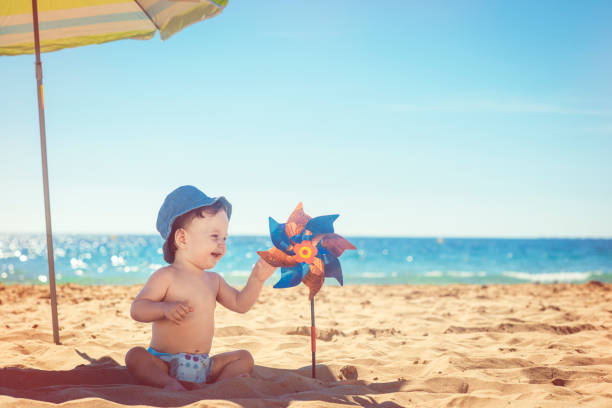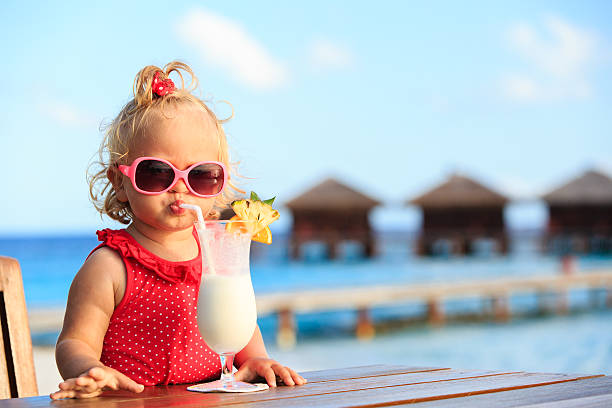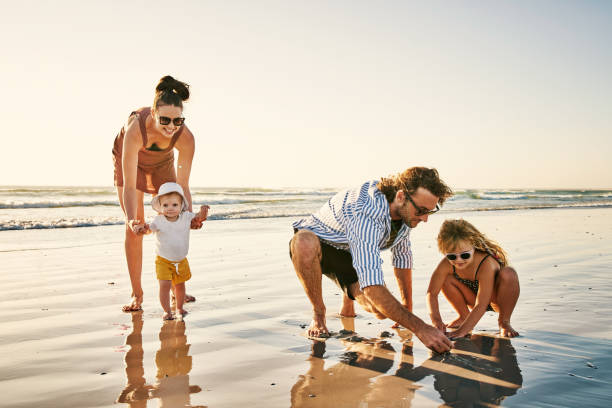
Can You Take Baby To The Beach? (Ultimate Guide)
With a little preparation and forethought, you can certainly take your infant on a quick beach vacation. After all, a genuine love for summer beach vacations will develop at a young age. A brand-new experience that calls for preparation and planning is taking a baby to the beach. Use the advice below to keep your child secure and safe this summer.
Table of Contents
What to Consider Before Taking Baby to the Beach?
What Age is Appropriate
Since almost the moment they were born, we have taken our babies to the beach for brief periods of time while wearing a carrier and a sun hat to protect their heads. There is no set age restriction, but it’s generally agreed that you shouldn’t put them in the water until they’re at least two months old and have had time to develop their immune systems.
Time of Day
Compared to adults, babies’ skin is significantly more sensitive to the effects of UV rays. Until your baby is at least 6 months old, it is best to stay out of the sun rather than apply baby sunscreen.
Try to avoid the hours of greatest sunlight, from 10 am to 4 pm, if you are taking your infant outside before six months of age. The best time of day to take a baby to the beach is early in the morning (though be sure to check the water temperature) or late in the day when the sun is setting and the UV rays are at their least dangerous.
Length of Time
For your baby’s first trip to the beach, we advise taking it very slowly. Don’t schedule a full 8-hour day in the sun. Base it on the weather; if it’s very hot, start with a brief morning or evening session and gradually increase the time they spend outside in the sun (don’t assume that the winter sun won’t burn you, either!).
Hitting the Surf With Babies
Take precautions when entering the water with a baby. For their first attempt, some babies prefer the security of being in a carrier and close to their parents, while other children will freak out no matter how big the waves are.
When taking their first dip in the ocean, try to find a calm beach or inlet. At first, they should only dip their toes in the water until they feel comfortable doing so. You might prefer to get them used to be in the water by dipping them into a swimming pool first because it is more controlled than the surf.
8 Tips for Taking Baby to the Beach
Find Shelter
Find or bring shelter if you intend to stay at the beach all day. Cabanas, lounge chairs, and umbrellas are frequently rented at resorts and on exclusive beaches. Bring a tent or umbrella or place your belongings close to a covered area or picnic shelter if you plan to visit the neighborhood city beach. Considering how delicate a baby’s skin is, prolonged sun exposure is not advised. Children under six months of age should not be exposed to direct sunlight, according to the American Academy of Pediatrics (AAP).
Bring Plenty of Sunscreen
Children six months of age and older must use sunscreen, which is a baby’s best friend. The AAP advises applying lotion every one to two hours and reapplying sunscreen 30 minutes before sun exposure. Use sunscreen with a high SPF or that is suitable for infants.
Maintain Hydration
Infants between the ages of six and eleven months should consume some water. Nursing is acceptable, but parents should aim to increase hydration by 50% when at the beach. To control body temperature, drink cool water. An airy swimsuit cover that is lighter than a beach towel can be used by nursing mothers.

Bring Baby Powder
The secret ingredient that magically removes sand from the skin is baby powder. Diaper rash is also lessened. To avoid diaper rash and sand that sticks, babies shouldn’t breathe in baby powder directly; instead, use cornstarch.
Use a Blowup Baby Pool
A baby pool is a useful tool for kids to keep them cool and busy. Placing a baby pool beneath a covered area enables the child to stay out of the sun. The sand and crashing waves surprisingly terrify a lot of kids. The pool offers consolation and security while enabling the parents to watch over their children without having to chase them down the beach.
Wear a Sunhat
Hats are one thing where bigger is better. Floppy sunhats shield the body’s most delicate skin, such as the eyes, lips, and ears, from the sun. Purchase a hat with a strap so it won’t blow away in the wind.
Keep Playing
Once a child feels at ease at the beach, their dreams of creating sand castles run amok. Bring the usual beach equipment, like a shovel and bucket. Kids enjoy playing, and the beach is their newest playground.
Use Swim Diapers
Compared to regular diapers, swim diapers are more absorbent. Additionally, swim diapers’ waterproof layers enable them to withstand extremely wet conditions. These diapers have UPF material and can be washed in the washing machine. When the gel pack is saturated to the point of explosion, regular diapers get messy.
Watch Out for Signs of Trouble
Watch out for your baby’s dehydration and illness symptoms related to the heat. Dehydration prevents babies from communicating, so it’s crucial to watch for these signs. Dehydration may be present if your baby has dry, hot, and red skin. Return inside as soon as your baby begins to exhibit these symptoms.
Heed Local Water Advisories
Babies’ immune systems are still developing, as you probably already know. Because of this, the security of dipping your child in the water at the beach depends on both the health and immune system of your own child and the security of the water you are entering. Keep an eye out for local water advisories because bacteria that consume human flesh can quickly ruin a fun family vacation.
Consider Pre-trip Swim Lessons
The American Academy of Pediatrics does not recommend formal water safety programs for children under the age of one because there is insufficient evidence to support their efficacy, but McCuiston tells Romper that even infants as young as four months old can learn.
“Prioritize water safety and swim lessons for your child, and seek out a reputable learn-to-swim facility in your area that is prioritizing COVID safety precautions while teaching this lifesaving skill,” McCuiston recommends.
Swim lessons are essential for kids to learn lifesaving skills, even if you decide your baby is too young to start before this beach trip. According to McCuiston, they may cut the risk of drowning by 88%.
Don’t Over-Plan
If your pre-baby vacations involved plans, you might want to keep things simple for a post-baby beach getaway. It’s crucial to be able to adjust to a diaper emergency or even a sudden downpour. It’s also important to maintain your sense of humor, even though this is sometimes easier said than done.

What to Take to the Beach With a Baby: 8 Essentials
You are prepared to go now that you are aware of the minimum age at which a baby can visit the beach and how to keep them secure, right? What, though, should you bring?
1. A good brand of sunscreen that is at least SPF 30 and is suitable for a baby’s delicate skin is recommended.
2. Choose a sun hat with a wide brim to protect your baby’s eyes and neck from the sun.
3. Huggies Little Swimmers, a brand of absorbent diapers, are available to handle any minor accidents.
4. A beach parasol or tent can provide young children with much-needed shade from the sun.
5. Pack a few extra layers of clothing as well as a change of clean, dry clothes.
6. Towels: one for sitting and one for drying off.
7. Drinks and snacks—enough to keep you hydrated, especially on a warm day, and a plentiful supply of snacks to keep your active beach baby satisfied.
8. Wipes are helpful for wiping down surfaces after eating sticky ice cream, rolling around in the sand, and, of course, changing diapers.
5 Beach Games to Play With Your Baby
Sand Art
Drawing lines and shapes in the sand requires the use of fingers, a stick, or a spade. Start with well-known shapes to capture your child’s attention, and then encourage them to try it themselves.
Catch Me If You Can
A squealing toddler will have a ton of fun running, carrying, or toddling from the approaching waves, especially if someone gets wet in the process!
Treasure Hunt
Put together shells, pebbles, and other beach-related items that your child can uncover by digging them up with their hands or a spade. Keep in mind: X marks the spot!
Sand Sculptures
Let your imagination soar! Use your hands; you don’t even need a bucket and a spade. Dry sand is less stable than wet sand, and beach finds like shells and feathers make wonderful decorations.
Beach Bingo
Take your child to the beach to look for various items and animals. Decide what you’re going to search for, then exclaim “bingo!”‘ when you make your discovery.
Summary: Be Careful
You can hear the crashing of the waves, the sun, and the sand. A summer must-have is the beachside vacation. It is, however, entirely possible to enjoy a quick beach vacation with your child if you take a little planning and precaution. After all, a deep love of summertime beach vacations can develop early.


